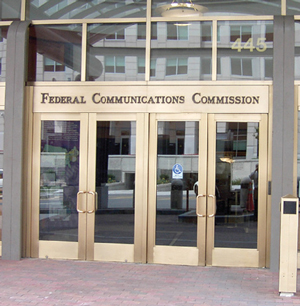What Spectrum Crisis?

You might not have noticed, but there is a ginormous amount ofpressure being applied to broadcasters to auction off their spectrum and consolidate their signals on fewer RF channels. Now, Mario enjoys watching MPEG artifacts as much as the next viewer, but if these guys have their way, all the television stations in a given market will try to squeeze onto a single 6 MHz channel, and everyone will have to watch on a Dick Tracy wrist TV with a display 30 pixels wide, ’cuz with that kind of bandwidth limitation, even a smartphone-sized screen, will produce images that look like a pig’s breakfast.
Former FCC Commissioner Michael Copps recently said on C-SPAN that he thinks there is an abundance of spectrum that ain’t being used: “There is alot of spectrum out there, and I don’t think anybody in the United States has very much of a clue exactly how much spectrum is lying fallow.”
In April, Verizon announced it planned to sell portions of spectrum it owns in a number of major markets; spectrum it purchased at FCC auction in 2008 and has been warehousing since. Said sale is contingent on Verizon’s getting approval to buy spectrum from four cable companies.Whatever. Certainly appears to Mario that Verizon has been sitting on unused spectrum for four years.
INNOVATE AWAY
Further, no lesser figure than Martin Cooper, formerly of Motorola and named as the inventor of the cellphone, doesn’t think there’s a spectrum crisis, least ways not one that we can’t innovate our way out of.
In an interview with The New York Times, Cooper said, “Somehow in the last 100 years, every time there is a problem of getting more spectrum, there is a technology that comes along that solves that problem.” He cited technological developments such as improved antennas and techniques to offload mobile traffic to Wi-Fi networks, which, he says, could multiply the number of devices carriers can serve by a factor of at least 10. He specifically recommends the use of smart antennas on cell towers, which, rather than radiating in all directions, would direct RF energy at the phones in use.
Mr. Cooper further said, “Every two-and-a-half years, every spectrum crisis has gotten solved, and that’s going to keep happening. We already know today what the solutions are for the next 50 years.”
David P. Reed, one of the original architects of the Internet and a former MIT computer engineering professor, argues that saying a nation could run out of spectrumis like saying it could run out of a color, as spectrum is not finite.
Reed states there are technologies for transmitting and receiving signals that do not interfere with each other, and that the real reason cell carriers want to control spectrum is to keep it out of the hands of others and thereby protect their businesses.
And he ain’t the only one. The NAB has called for a “fulsome inventory” (methinks “complete inventory” would better convey the message, in light of the many definitions of “fulsome,” none of which really applies), to determine once and for all whether there is really a spectrum shortage,or if spectrum is being hoarded to limit competition.
The NAB has specifically stated that, based on public comments made by company executives in published reports, some companies are “hoarding” spectrum.
SHARING SPECTRUM
In late May, a report from a presidential advisory committee was completed, and publicly presented to the President’s Councilof Advisors on Science and Technology, aka PCAST, and will be presented to POTUS himself in June. The authors of said report include, among others, Eric Schmidt, chairman of Google; and Craig Mundie, chief research and strategy officer of Microsoft.
These authors believe that computerized, agile radio systems can share spectrum on a vastly more efficient basis, which “would make it possible to move from an era of scarcity to one of abundance.”
The report concludes that radio spectrum could be used as much as 40,000 times more efficiently than it is currently used, and it recommends an approach that could increase capacity 1,000-fold. This efficiency would be achieved by agile techniques that rapidly switch the frequencies on which a device transmits and receives based on a set of rules.
Well, this is an important issue to us broadcaster types, and there is enough smoke here to warrant checking for fire. Keep an eye on this one, dear readers.
The FCC’s zeal to promote channel-sharing pretty much runs in direct oppositionto what it said back in 1997, when it rejected arguments for TV channels less than 6 MHz wide, saying that the use of a full 6 MHz channel is “necessary to provide viewers and consumers the full benefits of digital television made possible by the DTV Standard, including high-definition television, standard-definition television and other digital services. The DTV Standard was premised on the use of 6MHz channels. To specify a different channel size… would not promote [the FCC’s] goals in adopting the DTV Standard.”
Fifteen years later, the FCC has sure changed its tune. And by the way, there has not been one single broadcaster on the FCC since James Quello retired back in 1998. Coincidence?
Mario Orazio is the pseudonym of a well-known television engineer who wishes to remain anonymous. E-mail him atmorazio@nbmedia.com.

The professional video industry's #1 source for news, trends and product and tech information. Sign up below.
